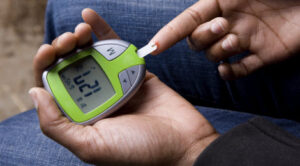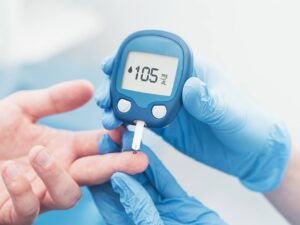Diabetes, a chronic condition affecting millions worldwide, has long been a focus of medical research and patient care. Traditionally managed through medication, diet, and exercise, there’s now a growing interest in alternative therapies that can complement these conventional treatments. Among these, heat treatment, or heat therapy, emerges as a fascinating and promising approach. This blog aims to explore the potential of heat treatment for diabetes, delving into its mechanisms, benefits, and more.
Contents
Is Heat Good For Diabetics?
 Heat therapy, involving the use of heat in various forms, has been explored as a complementary approach to managing diabetes. The principle behind heat therapy is based on its potential to improve blood circulation, which can be beneficial for diabetic patients who often suffer from poor blood flow, especially in the extremities. Improved circulation can aid in better oxygen and nutrient distribution throughout the body. This might help in overall health maintenance and possibly in the management of diabetes-related complications.
Heat therapy, involving the use of heat in various forms, has been explored as a complementary approach to managing diabetes. The principle behind heat therapy is based on its potential to improve blood circulation, which can be beneficial for diabetic patients who often suffer from poor blood flow, especially in the extremities. Improved circulation can aid in better oxygen and nutrient distribution throughout the body. This might help in overall health maintenance and possibly in the management of diabetes-related complications.
Moreover, heat application is known to induce a form of stress in the body, leading to a phenomenon known as heat shock response. This response activates heat shock proteins, which have been suggested to improve insulin sensitivity. Insulin sensitivity is crucial for individuals with diabetes, as it helps the body to use insulin more effectively, thereby aiding in better glucose control. While the direct effects of heat therapy on blood glucose levels are not fully established, these indirect benefits suggest that it could be a supportive treatment option.
How Does Heat Treatment For Diabetes Work?
Heat treatment for diabetes works through a combination of physiological responses triggered by the exposure of the body to increased temperatures. Here are the key mechanisms:
Improved Blood Circulation
Heat treatment, such as sauna use or warm baths, promotes vasodilation – the widening of blood vessels. This is particularly beneficial for individuals with diabetes, who often experience poor circulation, especially in the extremities. Improved circulation aids in more efficient transport of oxygen and nutrients throughout the body. Enhanced blood flow can accelerate wound healing, a critical aspect for diabetics who may suffer from slow-healing injuries.
Heat Shock Response and Heat Shock Proteins (HSPs)
Exposure to heat triggers a cellular defense mechanism known as the heat shock response. This response stimulates the production of heat shock proteins. This has a protective role in cells. Research indicates that these proteins can enhance insulin sensitivity. Improved insulin sensitivity is crucial in diabetes management, as it helps the body to effectively use insulin, thus aiding in better glucose utilization and control.
Stress Reduction
Heat treatments such as saunas or warm therapeutic baths are known for their relaxing effects. Stress is a significant contributor to erratic blood sugar levels in diabetics. By reducing stress, heat treatment can indirectly aid in stabilizing blood glucose levels. The relaxation derived from heat therapy may also improve mental well-being. This is vital given that diabetes management is a chronic and often stressful process.
Detoxification and Weight Management
 While the concept of detoxification in medical terms is often debated, heat treatment for diabetes can lead to increased sweating. This some believe helps in eliminating toxins from the body. Additionally, there’s a notion that regular heat exposure can aid in weight management, an important aspect of controlling type 2 diabetes. Weight loss and maintaining a healthy weight are critical in improving insulin sensitivity and reducing the burden on metabolic health.
While the concept of detoxification in medical terms is often debated, heat treatment for diabetes can lead to increased sweating. This some believe helps in eliminating toxins from the body. Additionally, there’s a notion that regular heat exposure can aid in weight management, an important aspect of controlling type 2 diabetes. Weight loss and maintaining a healthy weight are critical in improving insulin sensitivity and reducing the burden on metabolic health.
Reduced Inflammation
Chronic inflammation is a known factor in the worsening of insulin resistance and the progression of diabetes. Heat treatment has been suggested to help reduce inflammation levels in the body. This reduction in inflammation can potentially improve insulin action and glycemic control. While the exact mechanisms of how heat reduces inflammation are still being studied, this potential benefit could be significant in the long-term management of diabetes.
What Are The Risks And Side Effects?
While heat treatment for diabetes can offer potential benefits for diabetes management, it’s important to be aware of the risks and side effects, especially for individuals with diabetes who may have unique health concerns. Here are some of the key risks and side effects to consider:
Dehydration and Electrolyte Imbalance
The most immediate risk associated with heat treatment, such as sauna use or hot baths, is dehydration. The body loses a significant amount of water through sweat, and this can be exacerbated in a hot environment. For individuals with diabetes, dehydration can be particularly risky as it can affect blood sugar levels and kidney function. Along with water loss, there’s also a loss of electrolytes, which are vital for many bodily functions.
Hypoglycemia or Hyperglycemia
Heat can impact how the body uses insulin and can potentially lead to fluctuations in blood sugar levels. It can cause hypoglycemia (low blood sugar) in some individuals, particularly if they are on insulin or certain diabetes medications. Conversely, dehydration and stress from heat exposure can lead to hyperglycemia (high blood sugar) in others.
Blood Pressure Fluctuations
Heat causes blood vessels to expand, which can lead to a drop in blood pressure. For many people, this is not a significant issue, but for those with diabetes, especially if they have hypertension or cardiovascular issues, this could pose a risk. It’s essential to monitor blood pressure and avoid abrupt changes in body position after heat treatment to prevent dizziness or fainting.
Skin Sensitivity and Infections
People with diabetes often have sensitive skin or may have nerve damage that reduces sensation, particularly in their extremities. This reduced sensation can make it difficult to gauge how hot surfaces or water are, increasing the risk of burns. Moreover, any existing skin infections or wounds can be exacerbated in a hot and moist environment.
Cardiovascular Stress
Heat treatment places an increased load on the heart and circulatory system. For those with existing heart conditions, particularly common among individuals with long-standing diabetes, this can be a concern. The stress on the heart from trying to cool the body and maintain blood flow can be significant.
Given these risks, individuals with diabetes must approach heat treatment with caution. Consulting with healthcare professionals before starting any form of heat therapy is essential. It’s also important to start slowly, monitor blood sugar levels closely, stay hydrated, and be attentive to how one’s body reacts to the heat.
Lifestyle Strategies To Help In Diabetes
 Living with diabetes requires a comprehensive approach to lifestyle management. Effective strategies not only help in controlling blood sugar levels but also contribute to overall well-being and the prevention of diabetes-related complications. Here are some essential lifestyle strategies that can be helpful for individuals with diabetes:
Living with diabetes requires a comprehensive approach to lifestyle management. Effective strategies not only help in controlling blood sugar levels but also contribute to overall well-being and the prevention of diabetes-related complications. Here are some essential lifestyle strategies that can be helpful for individuals with diabetes:
Balanced Diet
Eating a well-balanced diet is crucial in managing diabetes. This means incorporating a variety of foods in the right proportions to maintain blood sugar levels within a healthy range. Focus on whole grains, lean proteins, healthy fats, and plenty of fruits and vegetables. Monitoring carbohydrate intake is especially important, as carbs have the most significant effect on blood sugar.
Regular Physical Activity
Engaging in regular physical activity is vital for diabetes management. Exercise helps improve insulin sensitivity, which means your body can use the available insulin more efficiently to control blood sugar levels. Aim for at least 150 minutes of moderate-intensity activity per week, such as brisk walking, swimming, or cycling. Additionally, include strength training exercises twice a week to build muscle mass, which is beneficial for blood sugar regulation.
Monitoring Blood Sugar Levels
Keeping a close eye on blood sugar levels helps in managing diabetes effectively. Regular monitoring can give insights into how different foods, activities, and stress affect blood sugar levels. This knowledge enables diabetic individuals to make more informed decisions about diet, exercise, and medication.
Weight Management
Maintaining a healthy weight is crucial for people with diabetes. Excess weight, especially around the waist, increases the body’s resistance to insulin. Losing even a small amount of weight can significantly improve blood sugar control. This can be achieved through a combination of diet and exercise, and sometimes, medication.
Adequate Sleep
Good sleep is often overlooked but is extremely important in diabetes management. Lack of sleep can affect the body’s ability to regulate blood sugar and can increase appetite, leading to weight gain. Aim for 7-8 hours of quality sleep per night and try to maintain a regular sleep schedule.
Stress Management
Stress affects blood sugar levels directly and indirectly. High-stress levels can cause blood sugar to rise and also make it harder to stick to a healthy eating plan and exercise routine. Techniques such as mindfulness, meditation, yoga, or even simple deep-breathing exercises can be effective in managing stress.
Avoidance of Smoking
Smoking is particularly harmful to people with diabetes as it increases the risk of complications, including heart disease, stroke, kidney disease, and nerve damage. Quitting smoking can improve overall health and help in the management of diabetes.
Moderate Alcohol Consumption
If you choose to drink alcohol, do so in moderation. Excessive alcohol can lead to either an increase or a decrease in blood sugar levels, depending on the amount consumed and if it’s consumed with food. The recommendation is up to one drink per day for women and up to two drinks per day for men.
Regular Health Check-Ups
Regular check-ups with healthcare providers are important to monitor and manage diabetes effectively. These check-ups can help in adjusting medications, diet, and exercise plans as needed. They also help in the early detection and management of any diabetes-related complications.
Conclusion
In conclusion, heat treatment for diabetes is helpful but with various risks as well. Also, a balanced diet and regular exercise are foundational to keeping blood sugar levels under control. Monitoring your blood sugar regularly, maintaining a healthy weight, getting enough sleep, and managing stress are all crucial for overall well-being.
Remember, small, consistent changes in your daily routine can make a big difference in managing diabetes and leading a healthier, more fulfilling life. Do you want to get rid of diabetes? Join our online diabetes treatment program and reverse Diabetes naturally through lifestyle changes such as a Personalized Diet plan, Exercise, Yoga, dieticians, and health coaches.

